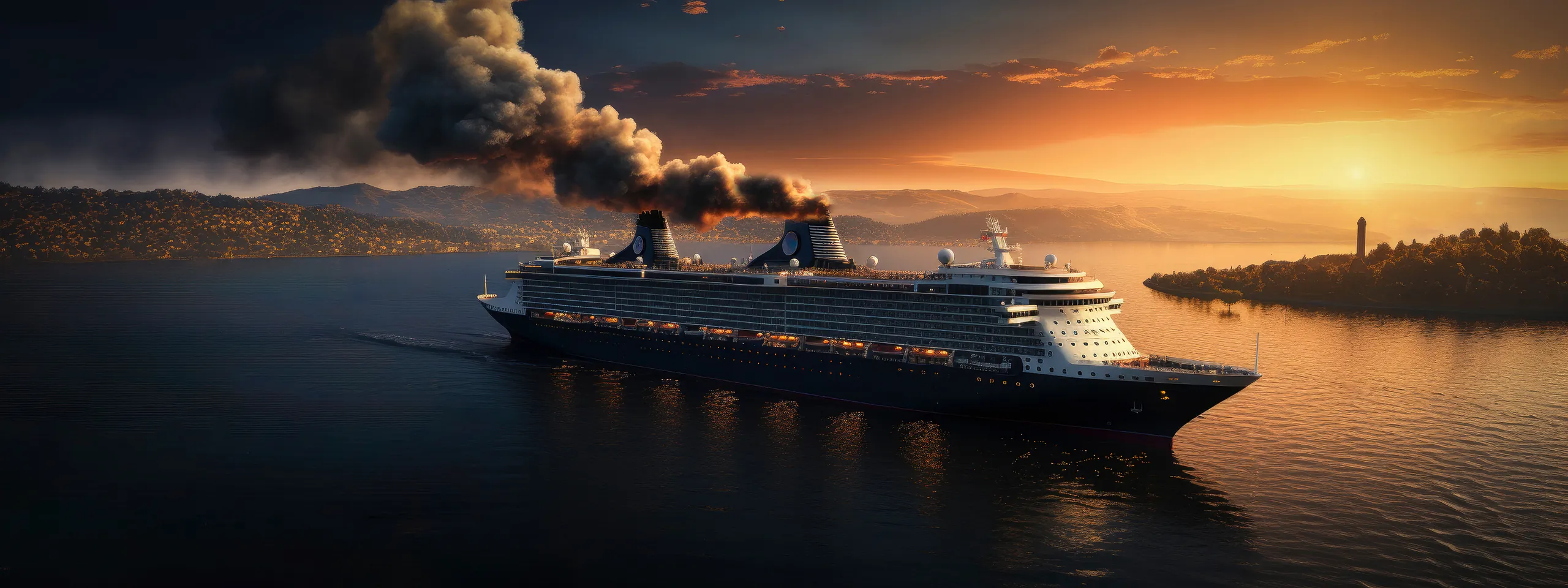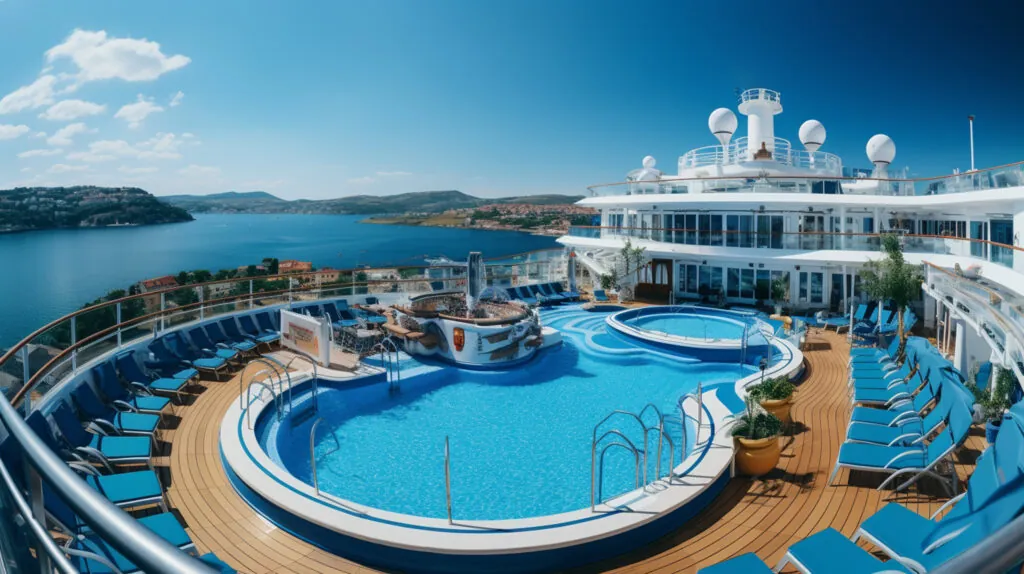How Onboard Pollution Could Be Harming Your Health Without You Knowing
Cruise vacations promise luxury, freedom, and adventure on the high seas. But beneath the glittering decks and panoramic views is a darker, lesser-known truth: cruise ships are regularly committing environmental violations—and the consequences may directly impact your health.
Many cruise lines have been fined, warned, or investigated for illegal dumping, air pollution, sewage mismanagement, and more. These violations don’t just harm the ocean—they can lead to contaminated drinking water, toxic air, and increased health risks for everyone onboard.
This guide uncovers the cruise industry’s environmental blind spots, the potential threats to passenger well-being, and what you can do about it.
Floating Cities with Hidden Waste
How Cruise Ships Generate Pollution
Cruise ships are massive. They can host thousands of passengers and crew, generating volumes of waste comparable to a small town—including sewage, greywater, food scraps, garbage, and engine exhaust.
Because they travel across international waters, cruise ships often operate in a gray area when it comes to environmental regulation. And with so much waste being produced, managing it safely and legally is both difficult and expensive.
The Scale of Environmental Offenses
Over the years, multiple cruise lines have been fined for illegally dumping untreated waste into the ocean. Some have used covert pipes and secret bypass mechanisms to avoid detection. In one case, a major cruise company was caught using a “magic pipe” to discharge oil-contaminated bilge water, leading to a $40 million fine.
The scope of violations is not limited to oil. Sewage, greywater, hazardous chemicals, and even solid waste have been dumped illegally, sometimes in protected marine sanctuaries or near tourist destinations.
The Water You Use May Not Be Safe
What Is Greywater?
Greywater is wastewater that comes from sinks, showers, laundry, and kitchen use. While not as obviously harmful as sewage, greywater can still contain bacteria, detergents, food waste, and trace amounts of heavy metals or chemicals.
Greywater Discharges and Passenger Exposure
Some cruise lines discharge greywater directly into the ocean, even when close to shore. What’s more concerning is the potential for cross-contamination. In rare but serious instances, greywater or untreated sewage may affect onboard water systems, increasing the risk of exposure for passengers.
If a ship’s water treatment systems malfunction—or if discharges aren’t properly managed—passengers can experience gastrointestinal illnesses, skin rashes, or more severe infections.
Breathing on Board: Air Quality Concerns
Dirty Fuel and Toxic Emissions
Cruise ships typically burn heavy fuel oil, one of the dirtiest fossil fuels in the world. When burned, it releases sulfur oxides, nitrogen oxides, carbon dioxide, and fine particulate matter—all of which are hazardous to human health.
How Air Pollution Reaches Passengers
Although the ship’s smokestacks may appear high above the deck, wind and ventilation systems can spread exhaust particles across lounging areas, balconies, and even into indoor cabins.
Research has shown that air quality on certain parts of cruise ships—especially downwind from exhaust vents—can be as polluted as the air in some of the world’s most polluted cities.
Health Effects of Breathing Cruise Ship Exhaust
Inhaling polluted air over several days at sea can lead to respiratory irritation, asthma flare-ups, chronic bronchitis, and other health issues. Elderly passengers, young children, and individuals with underlying lung conditions are especially vulnerable.
Waste Incinerators: Another Overlooked Threat
Burning Trash at Sea
Cruise ships often burn their own garbage using onboard incinerators. This practice reduces waste volume but may release harmful pollutants like dioxins and heavy metals into the air.
Toxins in the Open Deck Air
These emissions can drift over passenger areas—particularly near incinerator exhaust vents—leading to long-term exposure. Most passengers have no idea they may be inhaling potentially toxic chemicals while sunbathing, dining, or exercising outdoors.
When Regulations Fail: Legal Loopholes and Weak Oversight
Flags of Convenience
Many cruise ships are registered in countries like Panama, the Bahamas, or Liberia. These “flags of convenience” allow cruise lines to operate under jurisdictions with looser environmental and labor laws.
This makes accountability harder, as these nations often lack resources or political will to enforce violations or monitor environmental compliance.
Weak International Enforcement
International maritime laws like MARPOL (the International Convention for the Prevention of Pollution from Ships) set standards for pollution control. But enforcement depends heavily on inspections, which are infrequent and often announced in advance.
Because cruise ships move constantly between jurisdictions, companies can strategically discharge waste in regions with weak oversight or absent regulation.
Case Studies: Real Incidents, Real Consequences
Dumping in Protected Waters
In Alaska, a cruise ship was fined for illegally dumping sewage in designated no-discharge zones—areas set aside to protect sensitive marine ecosystems and fisheries.
Respiratory Complaints from Exhaust Exposure
A family sailing in the Caribbean fell ill during a cruise after several days of exposure to fuel exhaust blowing across their balcony cabin. After the trip, one member was diagnosed with bronchitis, and another reported chronic headaches—symptoms linked to poor air quality.
Outbreaks of Illness Linked to Onboard Water
There have been multiple norovirus outbreaks on cruises, sometimes affecting hundreds of passengers. While not all were linked to environmental violations, contaminated water and surfaces due to inadequate sanitation procedures are known contributors.
What Are Cruise Lines Doing About It?
Sustainability Pledges and Green Initiatives
To counter growing public criticism, many cruise lines have introduced green initiatives. These include scrubbers to reduce sulfur emissions, onboard water treatment plants, and fuel alternatives like liquefied natural gas (LNG).
Some newer vessels are even being designed with hybrid propulsion systems and improved recycling capabilities.
Greenwashing and PR vs. Practice
However, critics argue that many sustainability pledges are more about image than action. For example, scrubbers may reduce airborne pollution but often discharge the captured pollutants into the ocean—just shifting the damage elsewhere.
Many environmental upgrades are only featured on a small number of newer ships. Older ships, which make up the majority of most fleets, often lack modern pollution controls altogether.
Lack of Transparency with Passengers
Most troubling is the fact that cruise companies are not required to disclose environmental violations to travelers. A ship may have committed multiple offenses, paid fines, or violated probation, and passengers boarding it would be none the wiser.
How to Protect Yourself as a Passenger
Research Before You Book
Before booking, research the cruise line’s environmental history. Look for third-party ratings and watchdog reports. Some organizations publish annual report cards that grade cruise companies on their pollution practices and compliance.
Stay Safe Onboard
Choose balcony cabins if you’re concerned about ventilation. Avoid lounging near visible exhaust vents. If the water tastes or smells unusual, drink bottled water. Watch for signs of illness or poor hygiene onboard—and report them to ship officials.
If you witness illegal dumping or smell heavy exhaust fumes, document it and report it when you return to shore.
Ask the Right Questions
When speaking with cruise lines or travel agents, ask:
- What kind of fuel does this ship use?
- What waste treatment systems are onboard?
- Has this ship ever been fined for environmental violations?
The answers may be vague—but asking shows demand for accountability.
Should You Rethink That Cruise Vacation?
Cruise vacations offer incredible destinations and memorable experiences, but they’re not without risks. Environmental violations—whether through illegal discharges, poor air quality, or weak oversight—can directly affect your health.
While the industry is slowly evolving, many ships still pose serious environmental and safety concerns. Passengers deserve full transparency and safe conditions, both for themselves and the planet.
Being an informed traveler is more important than ever. Knowing the risks helps you make safer, more ethical choices.
Frequently Asked Questions (FAQ)
Can cruise ship pollution actually make passengers sick?
Yes, in certain circumstances, cruise ship pollution can contribute to health issues. Passengers have reported symptoms such as headaches, respiratory problems, nausea, and gastrointestinal illness—many of which may be linked to poor air quality from fuel exhaust or contaminated onboard water. While not every cruise poses an immediate risk, repeated environmental violations raise serious concerns about onboard safety standards.
How is cruise ship air quality regulated, and is it safe?
Air quality on cruise ships is not heavily regulated in international waters. Most cruise ships burn heavy fuel oil, which produces high levels of sulfur oxides and fine particulate matter. These pollutants can drift across the ship and enter through ventilation systems. While newer ships may use cleaner fuel alternatives or exhaust scrubbers, many vessels continue to operate without modern emissions controls, meaning the air may not be as safe as passengers assume.
Do cruise ships dump sewage into the ocean?
Yes, some cruise ships have been caught illegally dumping untreated or partially treated sewage into the ocean. Even when permitted, sewage dumping is allowed in international waters under MARPOL regulations, provided it is processed. However, enforcement is limited, and there have been documented cases of ships dumping waste in protected marine areas or violating discharge restrictions.
What happens when a cruise line breaks environmental laws?
When caught, cruise lines may be fined, placed on probation, or required to improve their systems. However, enforcement varies widely, and repeat violations are not uncommon. Some companies continue operating even after paying multimillion-dollar fines, and passengers are rarely informed about these offenses. The legal and regulatory consequences often fall short of ensuring lasting accountability.
Are newer cruise ships safer in terms of environmental practices?
Generally, yes—newer cruise ships are more likely to be equipped with modern waste treatment systems, exhaust scrubbers, and cleaner fuel technologies like LNG. However, only a fraction of the global fleet consists of new vessels, and not all of them meet the highest environmental standards. Older ships, still in regular use, are often less eco-friendly and pose greater risks in terms of pollution and emissions.
Contact The Cruise Injury Law Firm Today
If you or a loved one experienced illness, respiratory problems, or unexplained symptoms after a cruise, you may have grounds for legal action.
Cruise lines can be held liable for environmental negligence and health violations that endanger passengers. Don’t assume that your experience was just “bad luck.”
Contact The Cruise Injury Law Firm today to discuss your options and protect your rights.




